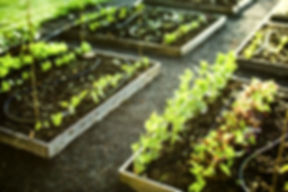
Lessons about community-university partnerships
Our main research goal in Food Dignity was to learn about remaking food systems from and with the five food justice community-based organizations (CBOs) that collaborated with universities in the project, mainly via doing case studies with each CBO. The evolution of our secondary research question, which centered on the collaboration itself, sheds some light on answers to it.
In the project proposal, submitted in June 2010, questions about the partnership itself, and about the academic-based organizations and collaborators, barely featured. The benefits of such partnerships were assumed in the referenced rationale that “partnerships between researchers, CBOs and citizens are promising for improving SCFS (sustainable community food systems) organizing and research.” Briefly, the proposal also mentions documenting “the role that the research partners do, could, and should play to support that work” and “implications for the role of land-grant universities in SCFS for FS (food security).” Tellingly, the “research partners” mentioned there refer to only academic researchers, to the discursive exclusion of community researchers.
By early 2012, the project’s principal investigator (Christine Porter) had begun planning to conduct a “6th case study” of the project collaboration, with a focus on the role universities and extension do, can, and should play to support CBO food justice work. The person who became the project’s community-university liaison in 2013 (Gayle Woodsum) pressed for differentiation between a 6th case about the academic individual and institutional collaborators vs. a 7th about the community-academic collaboration. To date, at least, we have not achieved that delineation. For example, we aborted an attempt to craft a Food Dignity Collaborative Pathway Model about the project collaboration for not being able to see how to create one for the academic partners on their own. A few of the outputs are more within the arena of Woodsum’s 6th case (Paths to Food Dignity videos; Hargraves, Porter & Woodsum 2018) but most of the resources below are more about the 7th case of the collaboration itself.
Top lessons from Food Dignity about forming equitable and productive community-university collaborations for food justice action and research are mostly for academic partners. They include striving to:
-
Acknowledge, ameliorate, and end systemic inequities between academic and community partners, which we now call academic supremacy. E.g., inequities in indirect costs and investments in capacity development for graduate students vs. emerging community leaders. (Porter & Wechsler 2018, Wechsler 2017, Woodsum 2018)
-
Recognize that research is only one means of producing knowledge, and the merits of its systemic and replicable methods for reliability also constrain and narrow what kinds of truths it can discover.
-
Invest financially in enabling interested community-based researchers to develop research products in first-person and CBO standpoints (including covering opportunity costs). Otherwise only academic-based researchers are supported and rewarded for such production.
-
Use other partnership methods described in our Approaches section, including striving for ethical and emotional rigor in addition to epistemological rigor. (Porter 2018, Bradley et al. 2018); e.g., be “co-passionate” (Wechsler 2017).
-
Be accountable to jointly crafted values
-
Pay attention to language use. E.g., community-campus vs. campus-community; using “researchers” to mean both community and academic researchers; and when Porter called the community subaward funds in Food Dignity the “community support package” she should also have named the academic funding the “university support package.”
See:
-
Paths to Food Dignity. (2015) A collection of first-person digital stories by members of the Food Dignity team with StoryCenter.
-
Field Notes by Katie Bradley of University of California, Davis, California
-
A View from Home by Alyssa Wechsler of University of Wyoming, Laramie, Wyoming.
-
Learning to Hear by Monica Hargraves of Cornell University, Ithaca, New York.
-
The Truth about Magic by Christine Porter of University of Wyoming.
-
Tracing the Paths: Telling Stories of Food Dignity (short documentary) by Matthew Luotto with StoryCenter.
-
-
Hargraves, Porter & Woodsum (2018). Leading Food Dignity: Why us? Journal of Agriculture, Food Systems, and Community Development, 8(Supp. 1).
-
Porter & Wechsler (2018). Follow the money: Resource allocation and academic supremacy among community and university partners in Food Dignity. Journal of Agriculture, Food Systems, and Community Development, 8(Supp. 1).
-
Porter (2018). Triple-rigorous storytelling: a PI’s reflections on devising case study methods with five community-based food justice organizations. Journal of Agriculture, Food Systems, and Community Development, 8(Supp. 1).
-
Woodsum (2018). The cost of community-based action research: Examining research access and implementation through the Food Dignity project community support package. Journal of Agriculture, Food Systems, and Community Development, 8(Supp. 1).
-
Hargraves & Denning (2018). Visualizing expertise: Collaborative pathway modeling as a methodology for conveying community-driven strategies for change. Journal of Agriculture, Food Systems, and Community Development, 8(Supp. 1).
-
Bradley, Gregory, Armstrong, Arthur and Porter. (2018). Graduate students bringing emotional rigor to the heart of community-university relations in Food Dignity. Journal of Agriculture, Food Systems, and Community Development, 8(Supp. 1).
-
Swords, Frith & Lapp. (2018). Community-campus collaborations for food justice: Strategy, successes and challenges at a teaching-focused college. Journal of Agriculture, Food Systems, and Community Development, 8(Supp. 1).
-
Wechsler. (2017). Overcoming the Venn diagram: Learning to be a co-passionate navigator in community-based participatory research. Research for All. 1(1): 147-157.
-
Porter, Herrera, Marshall & Woodsum. (2014). Shared voices, different worlds: process and product in the Food Dignity action research project. Gateways: International Journal of Community Research and Engagement, 7(1): 116-128.
-
Food Dignity Community-Campus Partnerships for Health Annual Award application. (2014).
